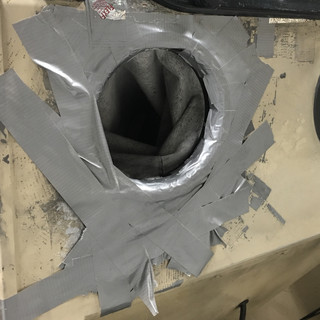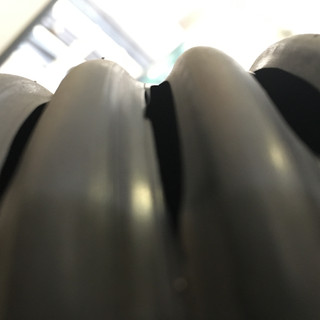Your Blaster Needs Maintenance
- Mark Hanna
- Mar 31, 2017
- 3 min read
It's a basic truth: all blasting equipment needs maintenance. Especially machines that use hard

abrasive grit. Unfortunately, normal wear and tear is mostly hidden from view – in grit valves, hoses, nozzle couplings and the like – so no wonder downtime comes as a surprise to the uninitiated.
Failure to Plan is Planning for Failure
OK, sometimes parts just fail for no reason. But even with properly outfitted blasting equipment, deterioration – and eventual failure – is going to happen. In fact, it's predictable. So, why react to a busted machine, or put workers at risk due to a burst hose? Instead, get ahead of the curve with preventive maintenance (PM). PM is key to a clean, safe, and efficient blast operation - and avoiding frustration.
When you defer maintenance, decayed parts seem to fail at the most inopportune time - and the bottleneck caused by downtime throttles your entire production line. That's when you'll learn that your lowly blaster is a critical part of the operation. People scramble to find workarounds; a driver is dispatched to buy parts, resources wasted, time lost, and you can't ship what you manufacture when your customer wants it.
Believe me, it's better to do the maintenance on your terms, rather than wait for breakdowns – and the sad discovery that needed parts are nowhere in stock.
What IS the plan?
We recommend you put PM on your calendar – and stick to it, no matter what. Most days it’ll take barely five minutes of inspection. But every few months, you need to plan a shutdown to disassemble valves and probe reclaim systems, dust collectors, regulators and hoses - investigating those hidden places in depth.
So, the next question is, what comprises the checkup - and how often? BlastPrep has come up with a handy PM schedule for your industrial blast machines. Here is the link.
More tips:
1. Install an hour-meter that measures actual blasting time (sometimes referred to as “trigger time”). This meter will record the hours that abrasive is actually coursing through the machine. Don’t connect the hour-meter to the light switch or the dust collector – it is far more meaningful to register the blasting solenoid or breathing air pump instead.
2. Keep a logbook. Using the log, you, soothsayer, gain predictive powers! The nozzle in your application wears out at 400 hours? Then prepare to change them every 2-1/2 months. Simple!
3. Keep an inventory of those wear items that are in constant contact with the abrasive, as well as those that would mean shutdown while you wait for replacements. You'll buy wear parts eventually, so store them onsite ahead of time, to minimize downtime. Your local blasting supply distributor can help select the right parts to have on hand (without going overboard).
4. Schedule a professional to PM the whole system every six months. Experts know where to look – and you’ll be back online in short order. An experienced service professional can also train both your maintenance personnel and line workers, so your mechanic will know where to look next time. And your blasting operators will gain expertise, to make your equipment as productive as possible.
5. Equip your machine right, right from the start. For any kind of production machine, especially those using hard abrasive, buy a machine equipped with rubber liners, carbide nozzles, heavy duty hoses or urethane. Incorporate Ultrawear protection for extreme blasting environments. Sight plugs on a pressure vessel will aid PM.
You wouldn’t ask a ½-ton truck to do the job of a semi, but I often see woefully inadequate equipment trying to keep pace with production – it ain’t pretty; more often than not it’s dusty and unsafe - and bound to fail sooner than later.
It always pays to work with a local expert, rather than a non-specialist, or distant online supply source. You'll get better advice, tailored to your specific equipment and operations.
Experience Can Be a Cruel Teacher
Check out the photos. Though entirely not entertaining at the time, some of these pictures are amusing in hindsight; just how did some of these components hold together so long, and the machine produce parts, before replacements were installed?
If you have your own maintenance stories, please feel free to share them with me. I'd love to hear from you.
(click on the photos to see their captions.)




































































































Comments